50 Years of GT40 Racing Wins
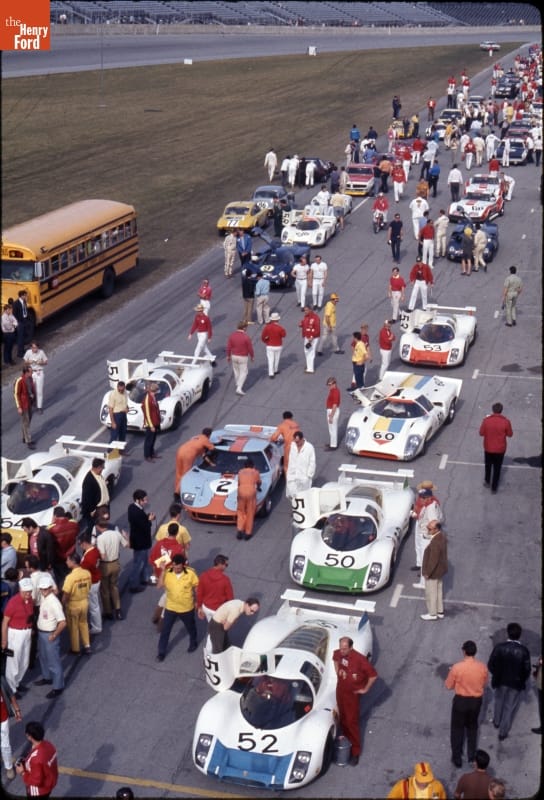
The Ford GT40 race car celebrates some big anniversaries this year and next. In 1966, GT40s finished 1-2-3 at the French endurance race 24 Hours of Le Mans, and in 1967, the Ford Mark IV now on display at The Henry Ford won an all-American victory at the same race, driven by Dan Gurney and A.J. Foyt. In honor of these milestones, we’ve just digitized about 800 color images from the Dave Friedman Collection showing races where GT40s competed, including this lineup from the 24 Hours of Daytona race in February, 1969. Visit our Digital Collections to browse the images by race, including the 1965, 1966, 1967, 1968, and 1969 12 Hours of Sebring; the 1966 and 1967 24 Hours of Le Mans; and the 1967, 1968, and 1969 24 Hours of Daytona—and if you want even more GT40, check out the video we just produced telling the dramatic story of our Mark IV and its fabled 1967 win.
Ellice Engdahl is Digital Collections & Content Manager at The Henry Ford.
Paint a Bigger Picture
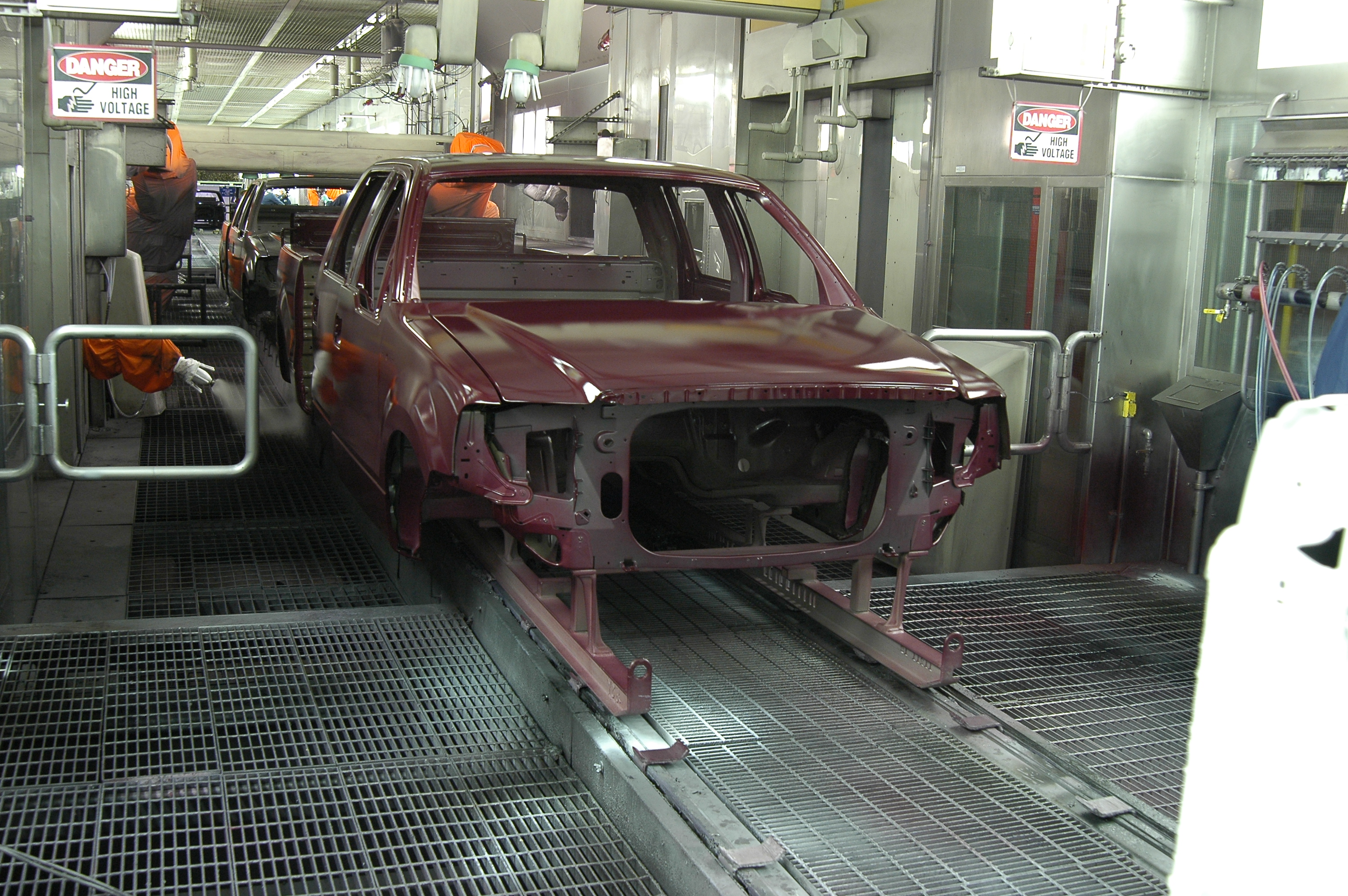
Image courtesy of the Ford Motor Comany Archives
The Fumes to Fuel program at Ford Rouge Complex strives to make the process of adding color onto cars more environmentally friendly.
Take the Ford Rouge Factory Tour, and a number of sustainable, environmentally conscious manufacturing practices and processes jump out at you right away. You’ll see the Dearborn Truck Plant’s massive living roof and purposeful use of natural light. You can even walk the surrounding outdoor sanctuary where birds nest, flowers bloom and honeybees flourish.
“What really impresses me is Ford’s continued commitment to tackle big issues and figure out new processes and ways of doing things that not only make it better for the product but also address air and water issues,” said Cynthia Jones, general manager of the Ford Rouge Factory Tour. “Ford is pushing the paint industry to make paints better, and it is also pushing to make its own processes better.”
Solvents in the paint used to coat vehicles wind up in the exhaust system, and what’s left is “nasty stuff,” according to David Crompton, a senior environmental engineer at Ford Motor Company. “A lot of countries will not permit the discharge of it into the atmosphere,” he added, “so our early work focused on developing ways of abating those solvents.”
The Fumes to Fuel process, which has been refined over several years, pushes solvent-laden exhaust air through a carbon bed. The carbon removes the solvents from the exhaust, leaving behind clean exhaust that can be safely discharged into the atmosphere. The carbon is then swept with nitrogen, heating it up and removing the solvents. The carbon returns to the absorption stage, and the solvent-laden nitrogen is condensed into a liquid form.
The entire process ends up being more environmentally friendly than producing water-based coatings, because less energy is required and the potentially harmful solvents are abated.
“Some of our competitors chose water-based coatings,” Crompton said. “We believe that solvent-born technology provides the best overall environmental performance because the technology requires less energy consumption, which translates into lower CO2 emissions. It also allows lower facility and operating costs, so there’s a smaller overall footprint.”
Another added benefit, the solvent-born coatings give Ford vehicles a best-in-class finish in terms of durability and chip and scratch resistance.
Did You Know?
The Ford Rouge Factory Tour’s Manufacturing Innovation Theater received a 2016 Thea Award for outstanding achievement for a brand experience. The Thea awards program honors creative excellence in theme parks, museums and other attractions, and is considered one of the attraction industry’s greatest honors.
This story originally ran in the June-December 2016 edition of The Henry Ford Magazine.
manufacturing, cars, environmentalism, The Henry Ford Magazine, Ford Rouge Factory Complex, Ford Motor Company
Ideas in Action

This feature originally ran in the June-December 2016 edition of The Henry Ford Magazine.
TV, The Henry Ford's Innovation Nation, technology, flying, inventors, The Henry Ford Magazine
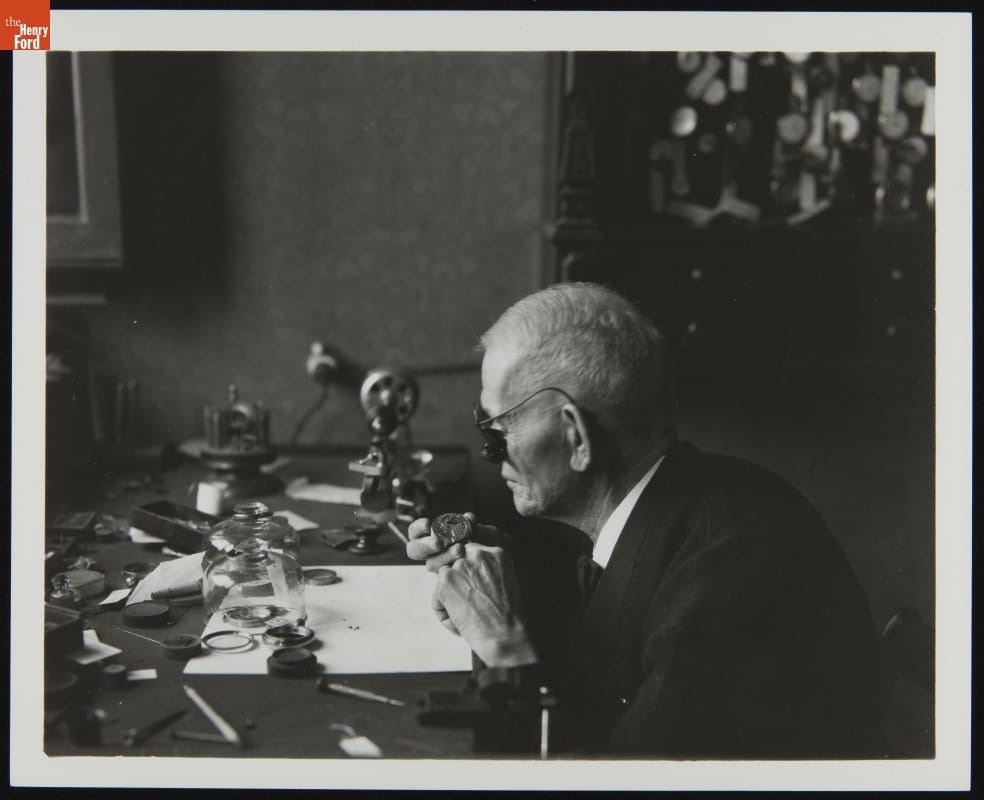
In the late 1880s, German immigrant Engelbert Grimm had a building designed by local architect Peter Dederichs, Jr., which was then built along Michigan Avenue in Detroit’s Corktown neighborhood. Grimm sold and repaired watches, clocks, and jewelry for more than four decades on the ground floor of this building, and lived with his family on the second floor. After the death of the store’s founder, customer Henry Ford acquired both the contents of the store and, later, the building itself, which now stands in Greenfield Village as Grimm Jewelry Store.
We’ve just digitized dozens of photographs from our collections related to the building, including this 1926 interior photo showing Engelbert Grimm hard at work. Visit our Digital Collections to see all of the Grimm Jewelry images.
Ellice Engdahl is Digital Collections & Content Manager at The Henry Ford.
digital collections, by Ellice Engdahl, Greenfield Village history, Greenfield Village buildings, Greenfield Village
Innovation Nation: The Wild Web We Can Wear
Forgo the needle and thread — all you need to make clothes from scratch is a computer and an idea.
In fashion, “printed” usually refers to patterned fabric. But when it comes to one company, it actually describes the way clothing is made.
Bay Area-based startup Electroloom is using 3-D printing to create seamless garments that are soft as butter. Its innovative electrospinning process ultimately makes it possible for anyone with some CAD ability to design and produce fabric items on demand. Dubbed field-guided fabrication, it entails making a mold, placing it in the Electroloom machine and watching as 3-D printer nozzles layer microscopic fibers up around it. Still in its infancy, the technology has so far been used to make simple garments such as beanies, tank tops and skirts.

After the Electroloom appeared on The Henry Ford's Innovation Nation earlier this year, The Henry Ford Magazine caught up with co-founder and CEO Aaron Rowley to talk more about the technology and the possibilities yet to unfold.
THF Magazine: How did the idea for Electroloom come about?
Rowley: I’ve been working in the technology industry, as have my co-founders, and we saw an obvious lacking in terms of 3-D-printing capability — it couldn’t make soft goods and material things like clothing, towels, shoes — anything that’s soft and flexible. We wanted to expand 3-D printing to produce those items. We knew that it would be extremely valuable, so we set out on this hypothetical task. We just started prototyping and designing, and that’s where the original genesis came from.
THF Magazine: How has your company evolved?
Rowley: When we first started working, we were in a garage and in our apartments working on the kitchen floor. Then, we began to work out of a technology shop and maker’s space, a community of people that supports a facility that has equipment, classes and training. We also participated in accelerated programs, which catapulted us to the next level. While the origins of this project were truly conceptual, when we were successfully getting fabrics and soft material, that’s what propelled us into building these larger, more robust machines.
THF Magazine: How does the Electroloom work?
Rowley: The simplest way to describe it is that we convert liquids into textiles. Basically, we use electricity to pull on the liquid, and the liquid, as it’s being pulled on, then hardens into a fiber and as you pull that across a gap — let’s say inside of a machine — that liquid converts into a fiber as it dries. The final product is completely seamless.
THF Magazine: So what does the fabric feel like?
Rowley: The fibers that we work with are actually single fibers, really tiny micro- or even nanoscale fibers. They’re very, very small, which makes the material very soft. The fabric has been described as a hybrid between cotton and suede. The texture on the surface is soft like suede, but it’s got the look and dimensions of cotton and polyester with comparable thickness.
THF Magazine: What’s next for the Electroloom?
Rowley: We are in the middle of fundraising right now. We also received a grant from the National Science Foundation specifically for projects pursuing advanced technology and nanotechnology. We are exploring some private investments, too. The goal is to expand the team to refine the technology and, later this year or early next year, have an actual set of machines “out in the wild” as well as our own clothing brand.
THF Magazine: How do you see this technology being applied?
Rowley: We’ve been approached by several clothing brands interested in working with the technology and product design teams who want to work with this method. A few stores are even interested in having the tools in-store to engage with customers. We’re flushing this out to determine what’s most doable in the near future. We’ll be settling on something soon and making some cool announcements.
THF Magazine: Do you really see people using Electroloom to make clothing in their own homes?
Rowley: I try to discern between near-term realistic stuff and what’s our bigger vision. Having people make things in their homes is far off, but the goal is to, over the years, refine this technology so if somebody did want to have this in their home to print fibrous products — from kitchen towels to socks and underwear — to supplement actually going out and purchasing these items in stores, we would love for that to happen and for people to be able to add customization, colors and shapes.
Did You Know?
It takes between eight and 14 hours to encapsulate a mold with printed fibers in the Electroloom.
How it Works
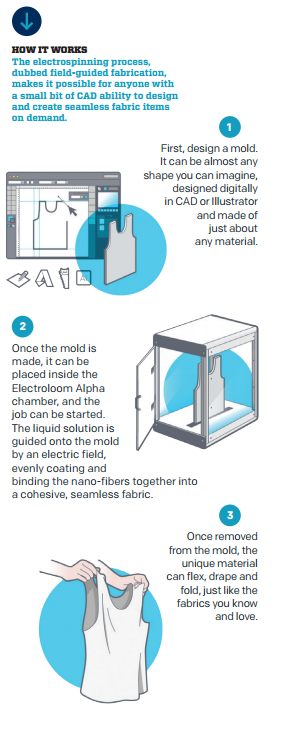
See the full episode of The Henry Ford's Innovation Nation here.
manufacturing, technology, making, fashion, The Henry Ford's Innovation Nation, The Henry Ford Magazine
Thomas Jefferson's Library
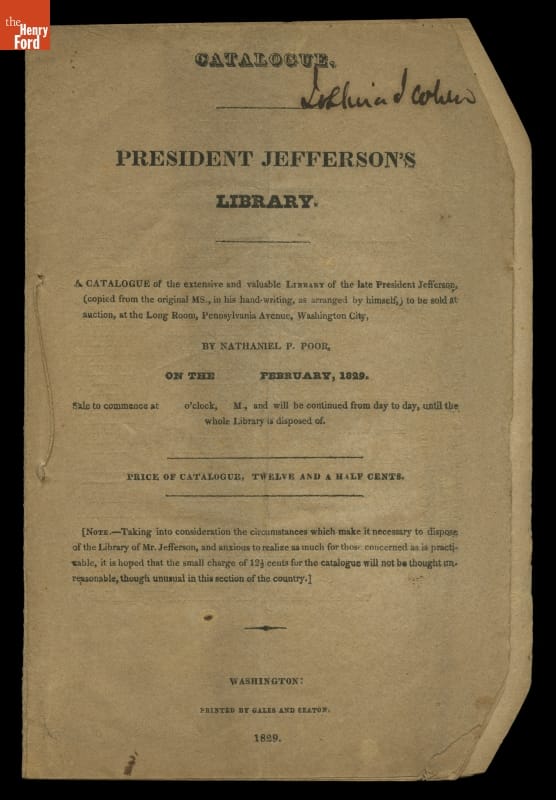
"I cannot live without books." - Thomas Jefferson
While most people are celebrating Independence Day, this Fourth of July is the 190th anniversary of Thomas Jefferson’s death. Thomas Jefferson compiled multiple libraries during his lifetime; one of which he used to restock the Library of Congress in 1815 after it had been destroyed during the War of 1812, and another that was auctioned three years after his death in February 1829. The auction catalog can be viewed in our digital collections and you can learn more about his libraries here.
Continue Reading
Virginia, Washington DC, 19th century, 1820s, 1810s, presidents, by Laura Myles, books
Building a Presidential Vehicle
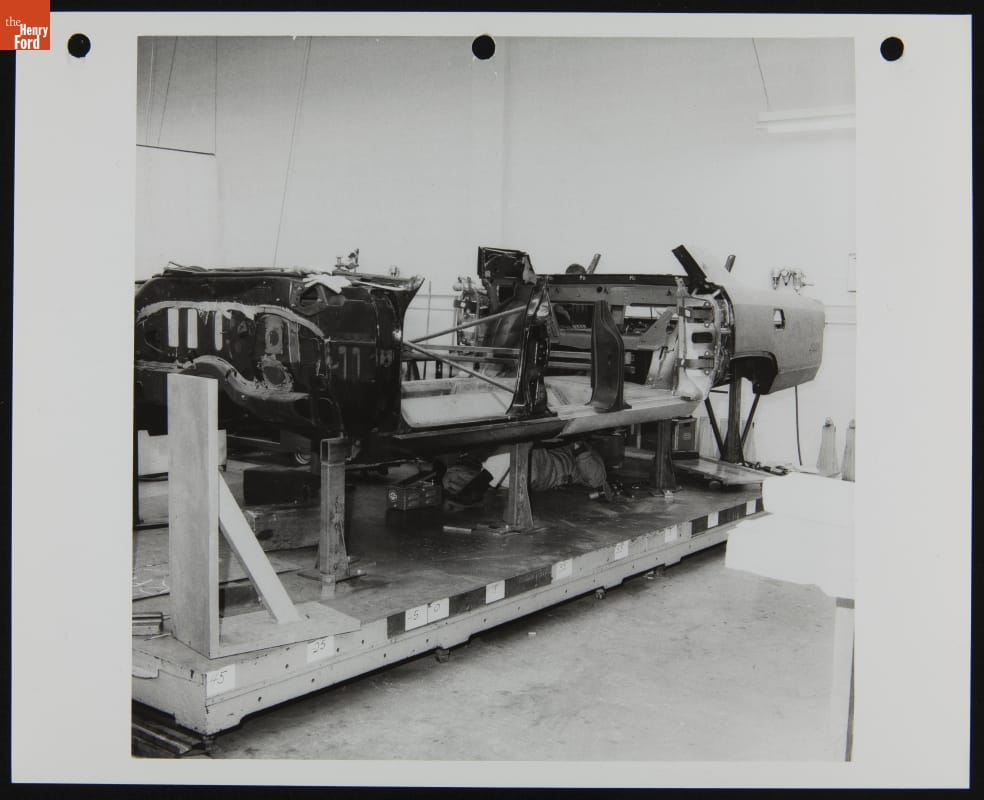
If you’ve visited Henry Ford Museum, you’ve probably seen our collection of Presidential vehicles, which includes a 1972 Lincoln limousine used by Ronald Reagan (notably on the day in 1981 when he was shot by John Hinckley). If you’ve ever wanted to learn more about how this car was originally built, you’re in luck. We recently discovered in our collections a series of detailed photographs documenting the original construction of the Reagan limo by Ford's Special Vehicles Engineering Department, mostly covering the period between August 1970 and October 1971. The early stage image shown here was taken on August 19, 1970. Explore more than 130 additional photos taken during the construction of this historic vehicle by visiting our Digital Collections.
Ellice Engdahl is Digital Collections & Content Manager at The Henry Ford.
Additional Readings:
- Presidential Vehicles
- The Henry Ford at Pebble Beach Concours d'Elegance
- #InnovationNation: Social Transformation
- Presidential Limousines at The Henry Ford
Ford Motor Company, presidential vehicles, presidents, cars, digital collections, by Ellice Engdahl
Take Me Home Huey
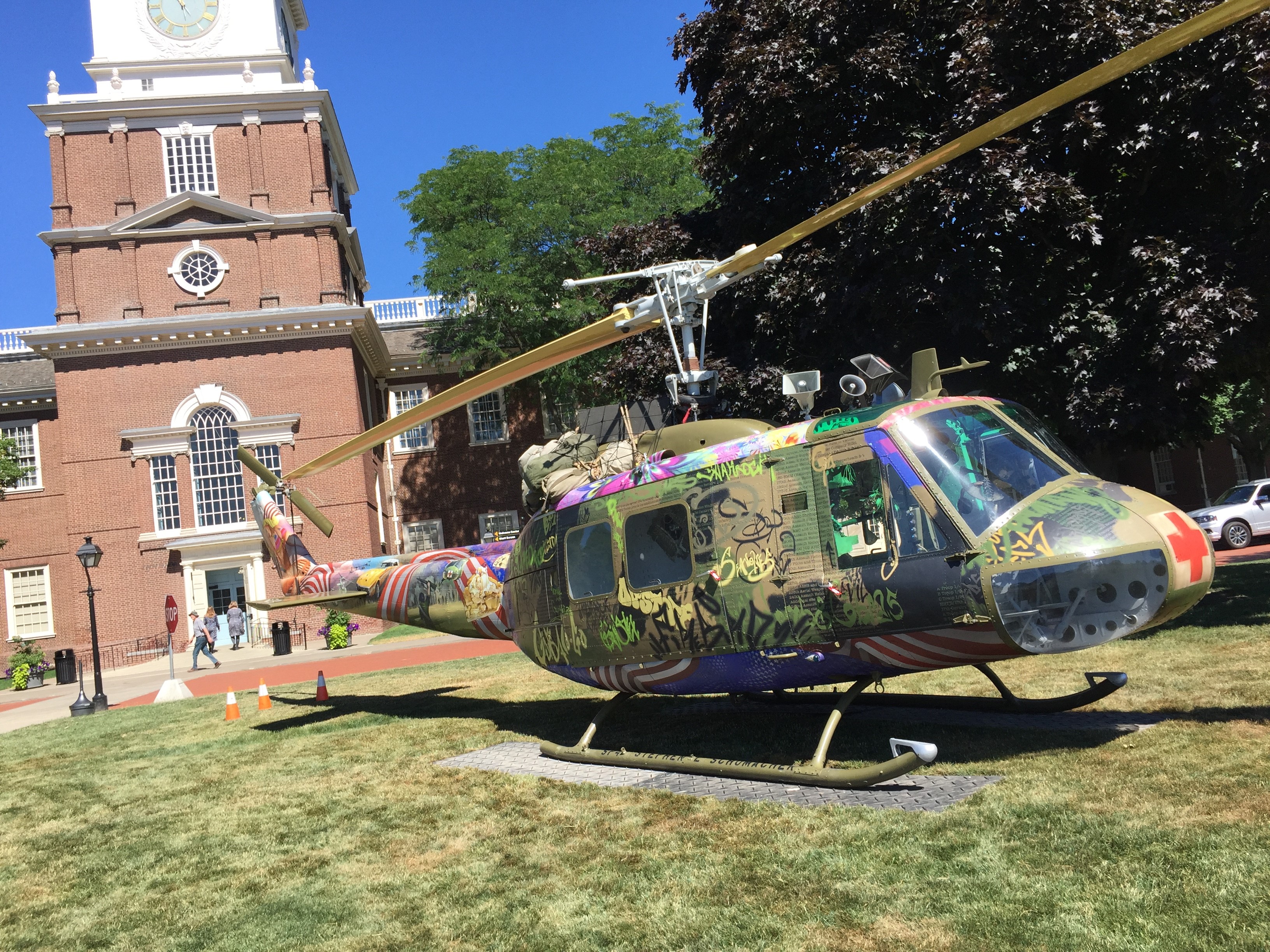
The Vietnam War is remembered as “the Helicopter War” for good reason. The Huey helicopter played a pivotal role serving the U.S. Armed Forces in combat as well as bringing thousands of soldiers and civilians alike back to safety. The helicopter’s prominent rotor “chop” and striking visual as it flew in groups across the sky, became iconic symbols of a challenging period in our nation’s history; symbols that continue to evoke powerful feelings today.
The Henry Ford is proud to host a special display on the front lawn of Henry Ford Museum: Take Me Home Huey is mixed-media sculpture created from the remains of an historic U.S. Army Huey helicopter that was shot down in 1969 during a medical rescue in Vietnam.
Artist Steve Maloney conceived of the piece to draw attention to the sacrifices made by veterans of the U.S. Armed Forces, and the 50th anniversary of the start of the Vietnam War. Maloney partnered with Light Horse Legacy (LHL), a Peoria, Arizona-based nonprofit and USA Vietnam War Commemorative Partner focused on Post-Traumatic Stress Disorder. LHL acquired the Huey helicopter – #174 – from an Arizona boneyard, re-skinned and restored it, and delivered it to the Maloney to transform into art for healing.
Learn more about Take Me Home Huey here.
Greg Harris is Senior Manager of Events & Program Production at The Henry Ford.
Asia, Michigan, flying, events, Dearborn, by Greg Harris, art, 21st century, 20th century, 2010s, 1960s
Most Thrilling Moments
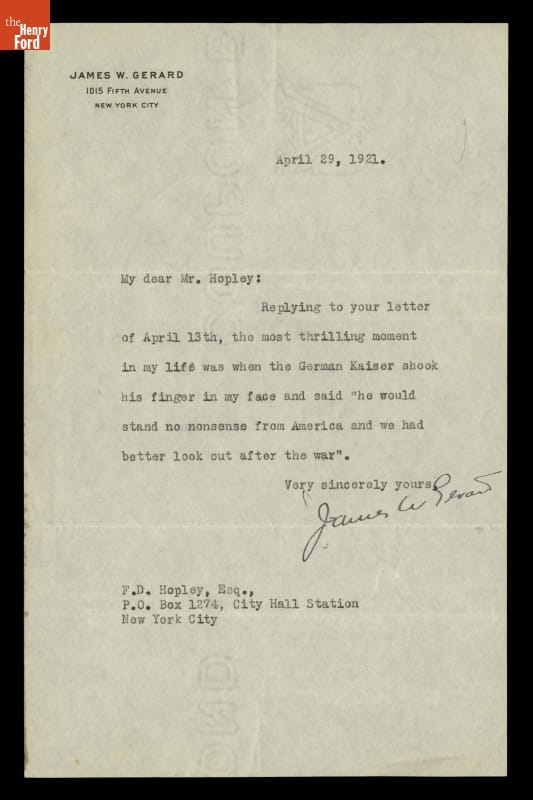
Because our collections are so vast and predate the computer age, we are always stumbling across interesting artifacts we weren’t expecting to find. We recently rediscovered a set of eight letters sent to writer Frank Dorrance Hopley from various notable personalities in 1921. Hopley hoped to write an article on the “most thrilling moment” in these men’s lives, and had asked them to share those stories. In the letter shown here, James W. Gerard, Ambassador to Germany during World War I, related that his moment was when “the German Kaiser shook his finger in my face”—a thrilling moment indeed. Unfortunately, many of the rest of the letters we located provide less thrilling—but perhaps more amusing—responses: former president William Taft noted his life had not been thrilling and he therefore could not single out any one moment, and Robert Lansing, Secretary of State during World War I, suggested his most thrilling moments were personal ones he did not care to reveal. Not surprisingly, we couldn’t turn up any evidence that Hopley’s article was ever completed. Visit our Digital Collections to read all the letters, including a momentous answer from Thomas Edison.
Ellice Engdahl is Digital Collections & Content Manager at The Henry Ford.
communication, archives, 20th century, 1920s, presidents, digital collections, correspondence, by Ellice Engdahl
Henry Ford and the Detroit Symphony Orchestra
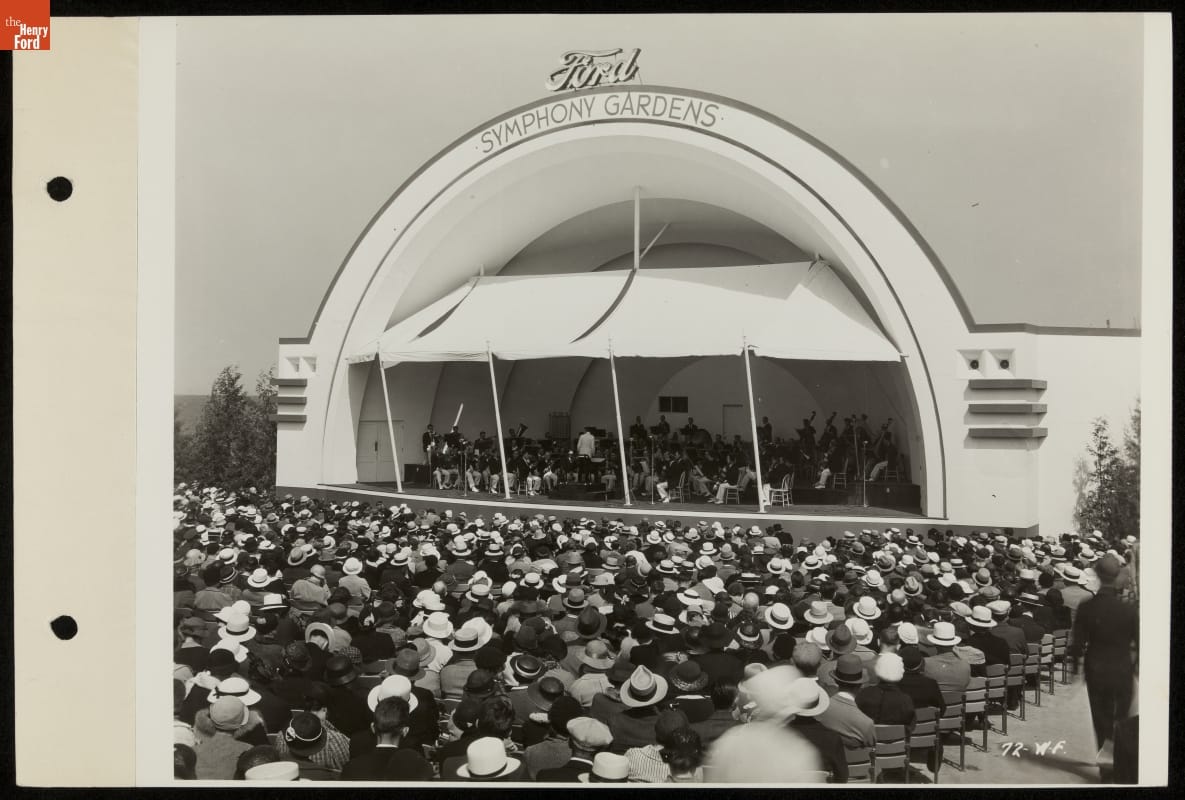
Concert in the Ford Symphony Gardens, Century of Progress International Exposition, Chicago, Illinois, 1934. THF212561
For the past 24 years the Detroit Symphony Orchestra and The Henry Ford have teamed up for Salute to America, our annual concert and fireworks celebration in Greenfield Village. But the affiliation between the DSO and our organization goes back much farther than that.
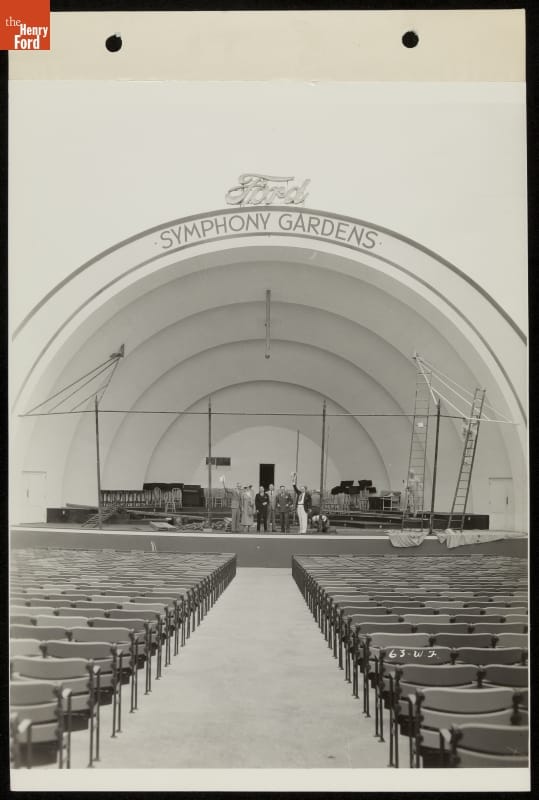
Preparing for a Performance in Ford Symphony Gardens, Century of Progress International Exposition, Chicago, Illinois, 1934. THF212547
The connection dates back to the 1934 Chicago World's Fair, A Century of Progress International Exposition. Ford Motor Company’s exhibits were housed in the famous Rotunda building and also included the Magic Skyway and the Ford Symphony Gardens. The large amphitheater of the Symphony Gardens hosted several musical and stage acts, including the DSO, who Ford sponsored for 150 concerts over the course of the year. The symphonic notes proved so popular that Henry and Edsel Ford decided to launch a radio program featuring selections from symphonies and operas - the Ford Sunday Evening Hour. The weekly program played to over 10,000,000 listeners each broadcast over the CBS network (the same network that now presents The Henry Ford's Innovation Nation). Musical pieces were played by DSO musicians under the name Ford Symphony Orchestra, a 75-piece ensemble, and were conducted by Victor Kolar, the DSO’s associate director, for the first few years of the show. Pieces ranged from symphony classics including works by Handel, Strauss, Liszt, Wagner, Handel, Puccini, Bizet, and Tchaikovsky (including, of course, the 1812 Overture), to some of Henry Ford’s favorite traditional and folk songs like Turkey in the Straw and Annie Laurie, and even included popular tunes such as Night and Day by Cole Porter.
Each broadcast featured guest stars, soloists, and singers such as Jascha Heifetz, Grisha Goluboff, Gladys Swarthout, Grete Stükgold, and José Iturbi. The broadcast performances were open to the public for free, first at Orchestra Hall from 1934-1936, and then at the Masonic Temple 1936-1942. The show ran from 1934-1942, September-May with 1,300,000 live attendees and countless radio listeners tuning in.
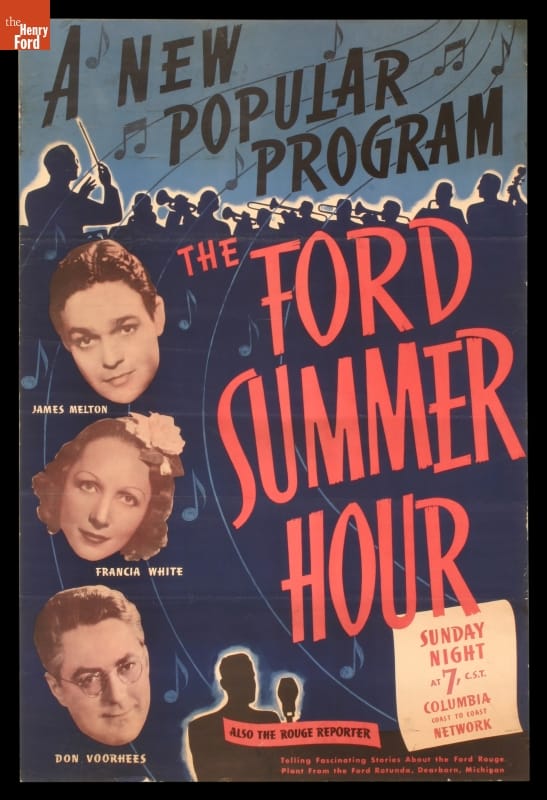
Advertising Poster, The Ford Summer Hour, 1939. THF111542
Salute to America is our summer music tradition, and listeners in 1939 must have wanted some summer-themed music as well because Henry and Edsel started the Ford Summer Hour that year. Like the winter program, it was broadcast each Sunday evening on CBS, from May to September and featured a smaller 32-piece orchestra, again mostly made up of DSO musicians. Guest stars and conductors appeared, such as Don Voorhees, James Melton, and Jessica Dragonette.
The show included music from Ford employee bands like the River Rouge Ramblers, Champion Pipe Band, and the Dixie Eight. This was a program of lighter music, popular songs, and tunes from musical comedies and operettas. Apparently not everyone appreciated the lighter fare; a letter from a concerned listener stated:
“...as the strains of the trivial program of Ford Summer Show float into my room, I am moved to contrast them with the fine programs of your winter series, and to wonder why the myth persists that in hot weather the human mentality is unequal to the strain of listening to good music. Pardon me while I switch my radio to station WQXR which has fine music the year round.”
Strong words from the listening public, though apparently not the majority as the summer program rivaled the winter program with about 9,000,000 listeners per broadcast. The Ford Summer Hour, broadcast from the Ford Rotunda, only ran three seasons, but played a wide range of music for listeners such as Heigh Ho from Snow White, Dodging a Divorcee, selections from Carmen, Oh Dear, What Can the Matter Be, and One Fine Day from Madame Butterfly.
Both programs ceased by 1942 with the opening of World War II. Henry Ford II tried to bring back the Ford Sunday Evening Hour in 1945, broadcasting the same type of music by DSO musicians, but times and tastes had changed and the program was discounted after the first season.
Kathy Makas is a Benson Ford Research Center Reference Archivist at The Henry Ford. To learn more about the Ford Sunday Evening Hour or Ford Summer Hour, visit the Benson Ford Research Center or email your questions to us here.
Greenfield Village, events, Salute to America, by Kathy Makas, Ford Motor Company, Edsel Ford, Ford family, radio, world's fairs, Michigan, Henry Ford, music, Detroit

